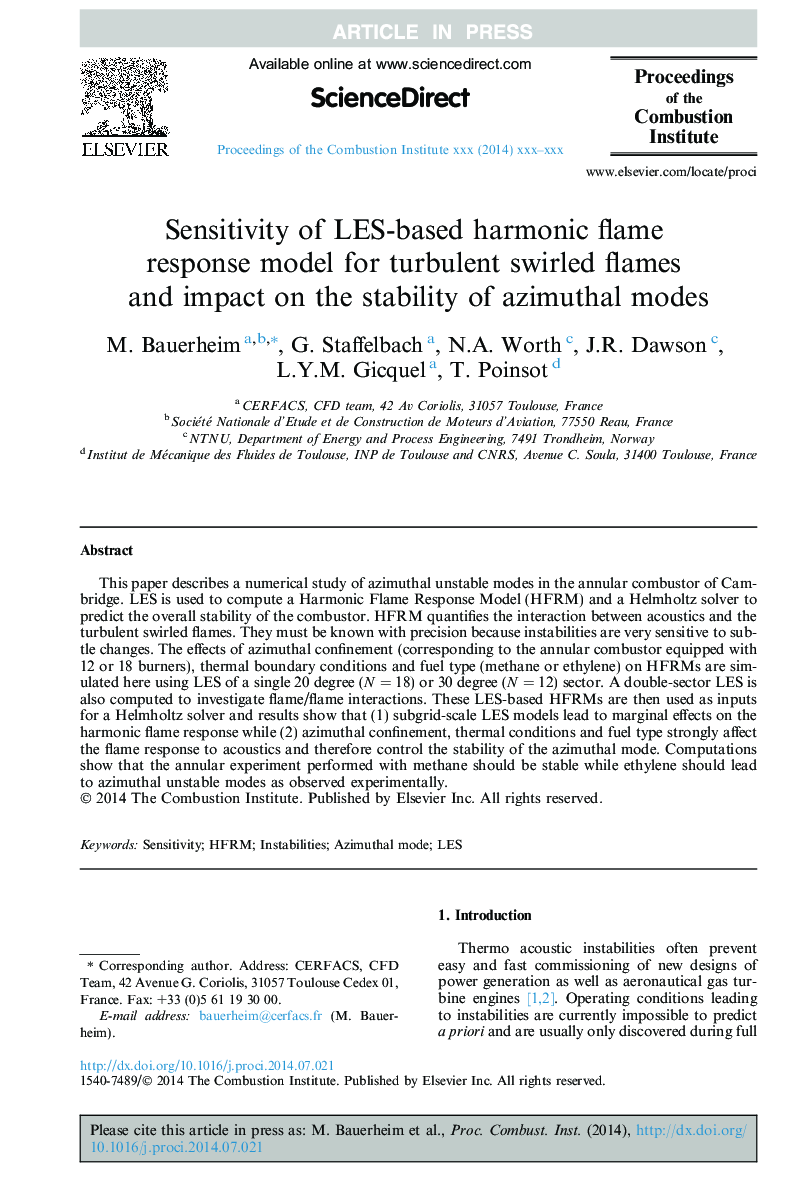| Article ID | Journal | Published Year | Pages | File Type |
|---|---|---|---|---|
| 4915593 | Proceedings of the Combustion Institute | 2015 | 9 Pages |
Abstract
This paper describes a numerical study of azimuthal unstable modes in the annular combustor of Cambridge. LES is used to compute a Harmonic Flame Response Model (HFRM) and a Helmholtz solver to predict the overall stability of the combustor. HFRM quantifies the interaction between acoustics and the turbulent swirled flames. They must be known with precision because instabilities are very sensitive to subtle changes. The effects of azimuthal confinement (corresponding to the annular combustor equipped with 12 or 18 burners), thermal boundary conditions and fuel type (methane or ethylene) on HFRMs are simulated here using LES of a single 20 degree (N=18) or 30 degree (N=12) sector. A double-sector LES is also computed to investigate flame/flame interactions. These LES-based HFRMs are then used as inputs for a Helmholtz solver and results show that (1) subgrid-scale LES models lead to marginal effects on the harmonic flame response while (2) azimuthal confinement, thermal conditions and fuel type strongly affect the flame response to acoustics and therefore control the stability of the azimuthal mode. Computations show that the annular experiment performed with methane should be stable while ethylene should lead to azimuthal unstable modes as observed experimentally.
Keywords
Related Topics
Physical Sciences and Engineering
Chemical Engineering
Chemical Engineering (General)
Authors
M. Bauerheim, G. Staffelbach, N.A. Worth, J.R. Dawson, L.Y.M. Gicquel, T. Poinsot,
